
GOOGLE SIGNALS
Cross-Device tracking with a little machine learning mixed in
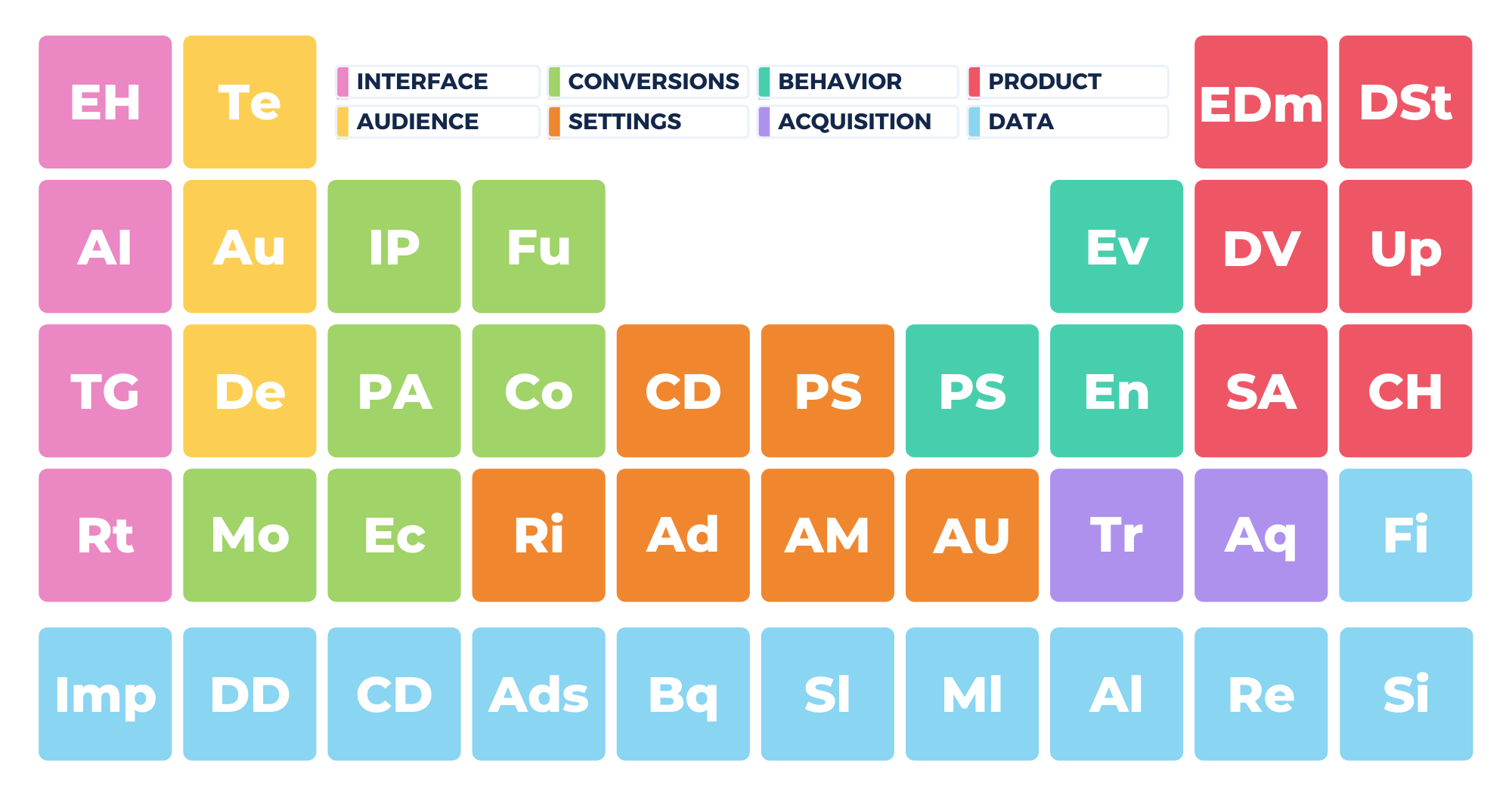
Google Signals is a built-in Google Analytics (GA) feature that allows you to enable automatic cross-device tracking. You need to give permission to Google to collect data from users who interact on your site with different devices.
From then onwards, you will also get access to other exciting data collecting features. Amongst these are GA Advertising Features and enhanced audiences.
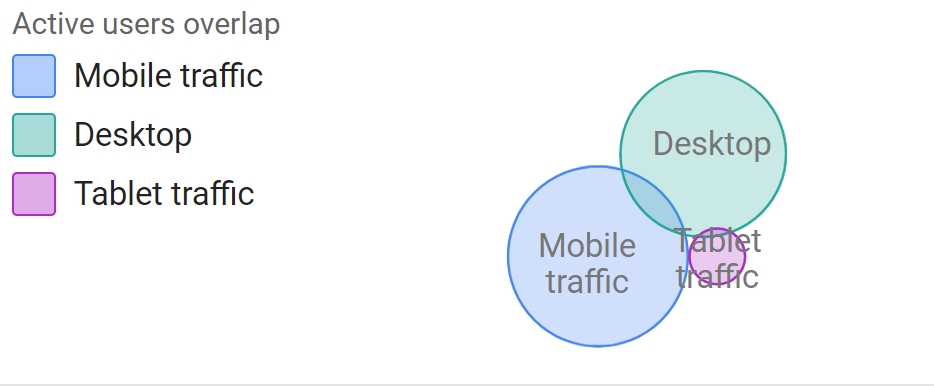
What you will learn
- What Google Signals actually is.
- How you can activate Google Signals in Google Analytics 4.
- The relationship between cross-device tracking in GA and Google Signals.
- How to create a basic cross-device report in GA4.
- How you can add dimensions and metrics for a deep cross-device analysis. Think of conversions, traffic sources, channels, etc.
What is Google Signals, anyway?
Google Signals is an advanced data collection feature in Google Analytics. By default, it’s not activated. After you switch it on, you will get data about how users interact with your site or app across devices.
Behind this simple definition of Google Signals, there is a pile of important implications for you as a marketer, analyst and business owner.
- Google Analytics does not track cross-device user visits and behavior on your site by default. That may come as a surprise to you, unless you are already familiar with enhanced measurement tracking. That’s another kind of GA4 enriched data collection feature you need to activate before the data shows up in your reports.
- Google gives the impression that cross-device tracking is a nice to have bonus. But as you know, people jump from one device to another all the time. If you don’t activate Google Signals, you are missing out on tons of data that can help you improve your marketing efforts and budget.
- Just as with Google Analytics benchmarking, Google grouped cross-device tracking in with other features. If you want to target users who visited your site with paid Google Ads, you have to activate Google Signals.
- Collecting data from users comes with an increasing responsibility. Privacy, you know. The GDPR, for instance, requires a lot more than placing a cookie consent banner on your site. Since Google Signals uses data from its ecosystem, you must accept (and apply) the policy for GA advertising features. If you don’t, GA4 will not track cross-device user behavior.

Let’s see how you can collect data in GA4 from your users who visit your site with a tablet, smartphone and desktop. Or any combination of these devices.
How to activate Google Signals in GA4?
In order to activate Google Signals and start tracking cross-device or use advanced advertising features, you need to be an administrator or editor. Then follow the instructions below.

You can find the button in the top-left bottom corner.
Step 2: Choose the right property

Google Signals collects data on the property level, so make sure you select the appropriate website before you continue.
Step 3: Click Data Collection under Data Settings
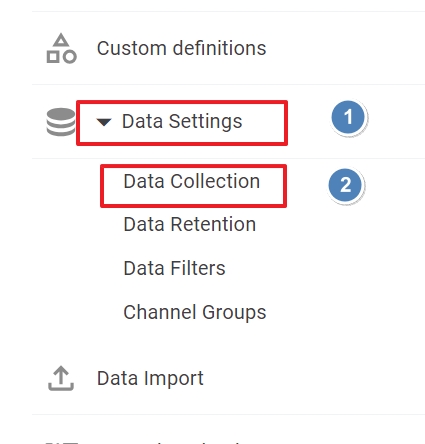
Google Signals is a feature to collect more data in GA, so it makes sense that you can access it under Data Settings in your property column.
Step 4: Click Get Started
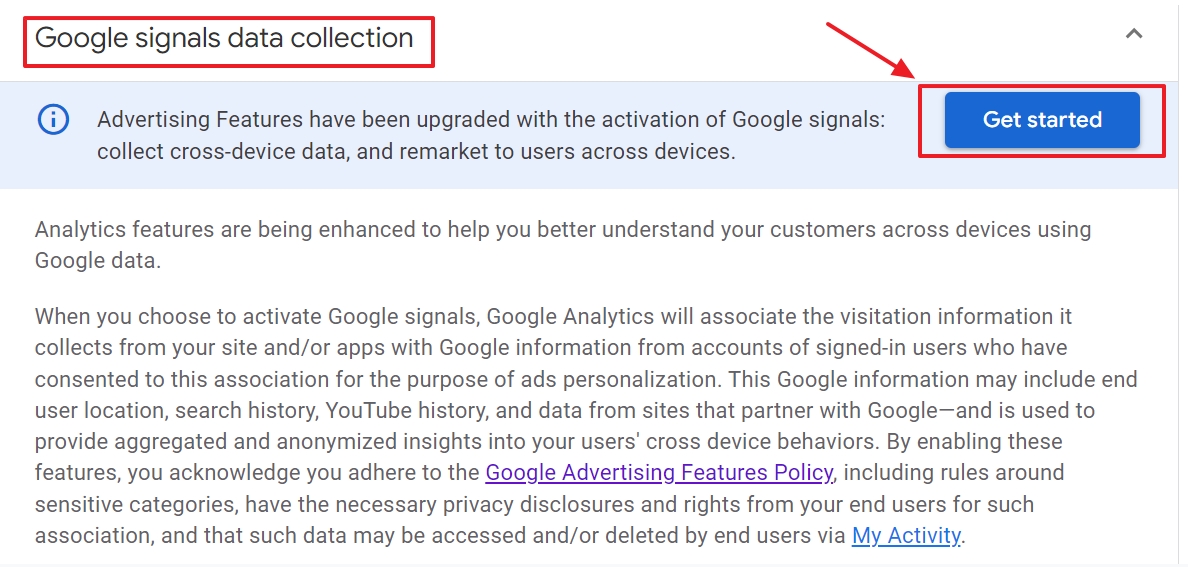
You can see the button in the right corner when you open the Google Signals Data Collection section. Since Google can change its policies and features at any moment, the best you can do is read the description.
Step 5: Click Continue
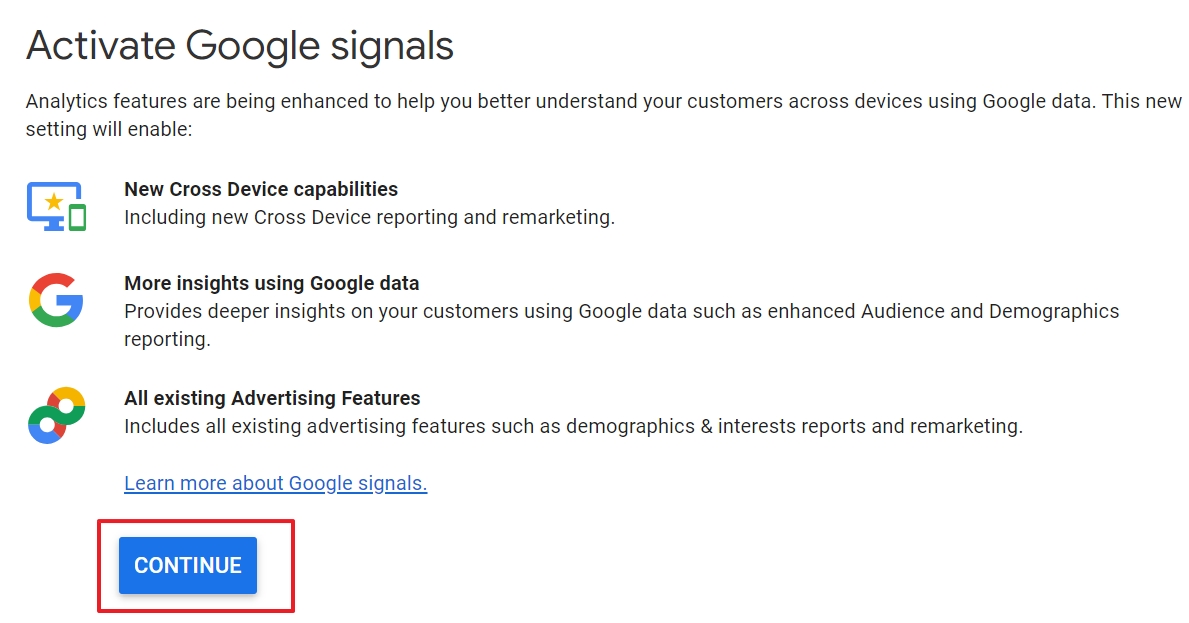
The screen gives you an overview of the analytics features you will have access to after clicking the Continue button. At this moment, these features include:
New Cross Device capabilities
More insights using Google data
All existing Advertising Features
Step 6: Click Activate
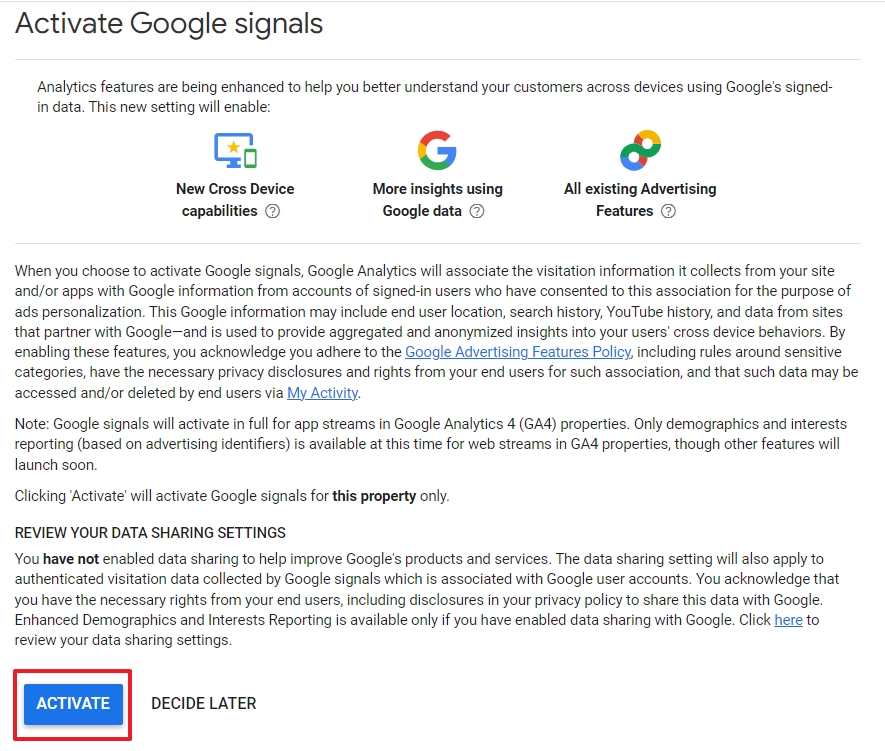
Again, you encounter a screen with a summary of the Google Signal features, as well as links to Google’s policies and the data sharing settings of your account. The last thing you need to do is click the Activate button.
Google Signals is now active for your GA4 property.
Welcome to the world of more data.
In most Google Analytics accounts, it’s going to take at least 30 days to accumulate enough data to collect cross-device data. So, as long as your Google Analytics tracking is GDPR compliant, you might as well turn on Google Signals now.
As you have understood, Google Signals unlocks a lot of hidden gems, but in the rest of this post, I will focus on cross-device data.
Where can I find cross-device tracking reports in Google Analytics?
To access cross-device data in Google Analytics, you first need to activate Google Signals. Then, you have to create a cross-device overlap report yourself because GA4 doesn’t have a default one.
In fact, you need an exploration. We have published a step-by-step guide on how to create a segment overlap report, so I will briefly describe what you need to do to see cross-device data in GA4:
1. Open explorations in the menu on the left.
2. Choose Segment Overlap as the template to begin with.
3. Remove the age dimension of Segment Comparisons.

As a side note: age and gender of your users are a part of Google Signals Data Collection.
4. Then, click on the plus sign next to Segment in the Variables panel.
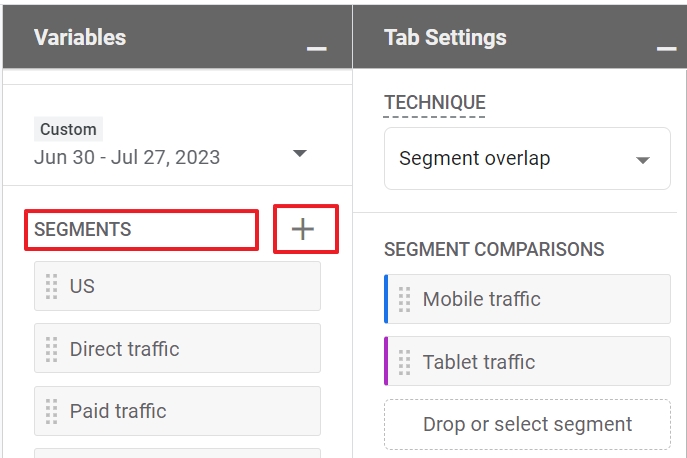
5. In the Build Segment screen, click on Templates and then Technology.
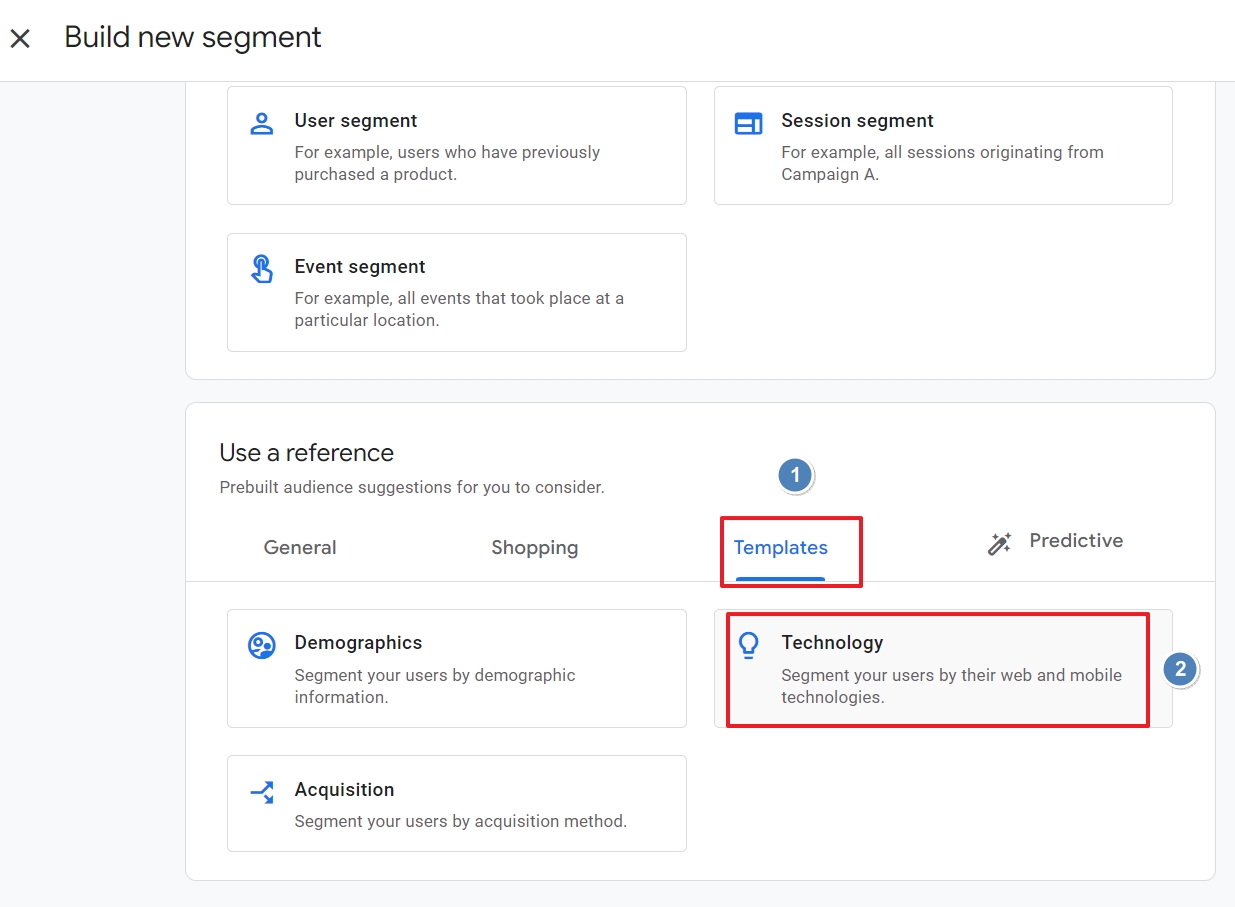
6. Give your segment a proper name and choose the settings as in the screenshot below.
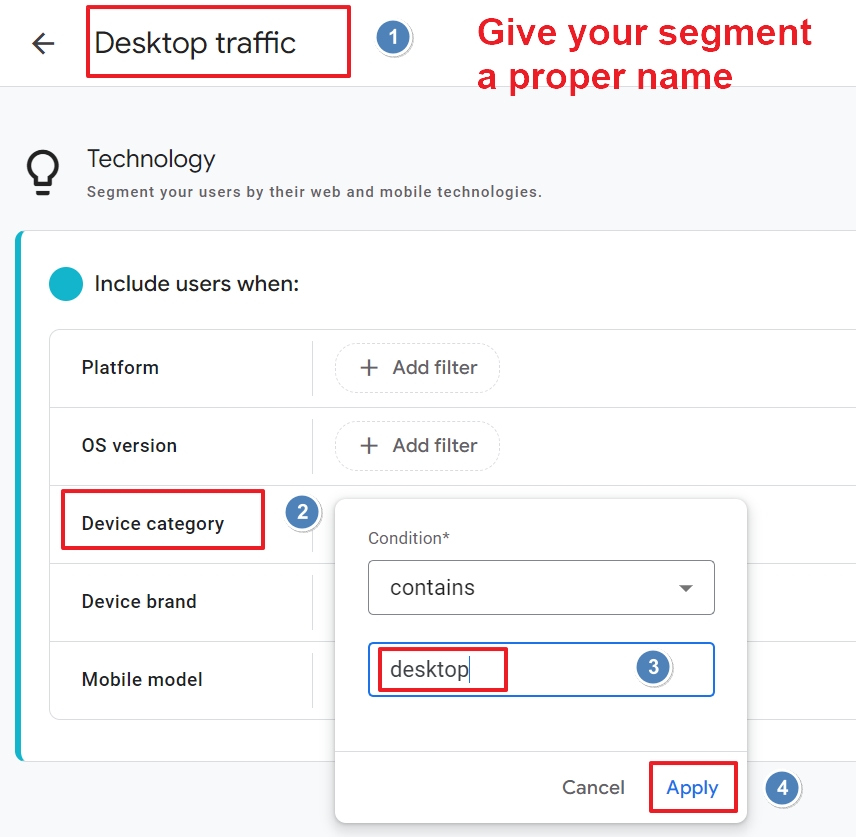
Device category
Condition contains “desktop”.
Then click Apply.
7. Click the Save button
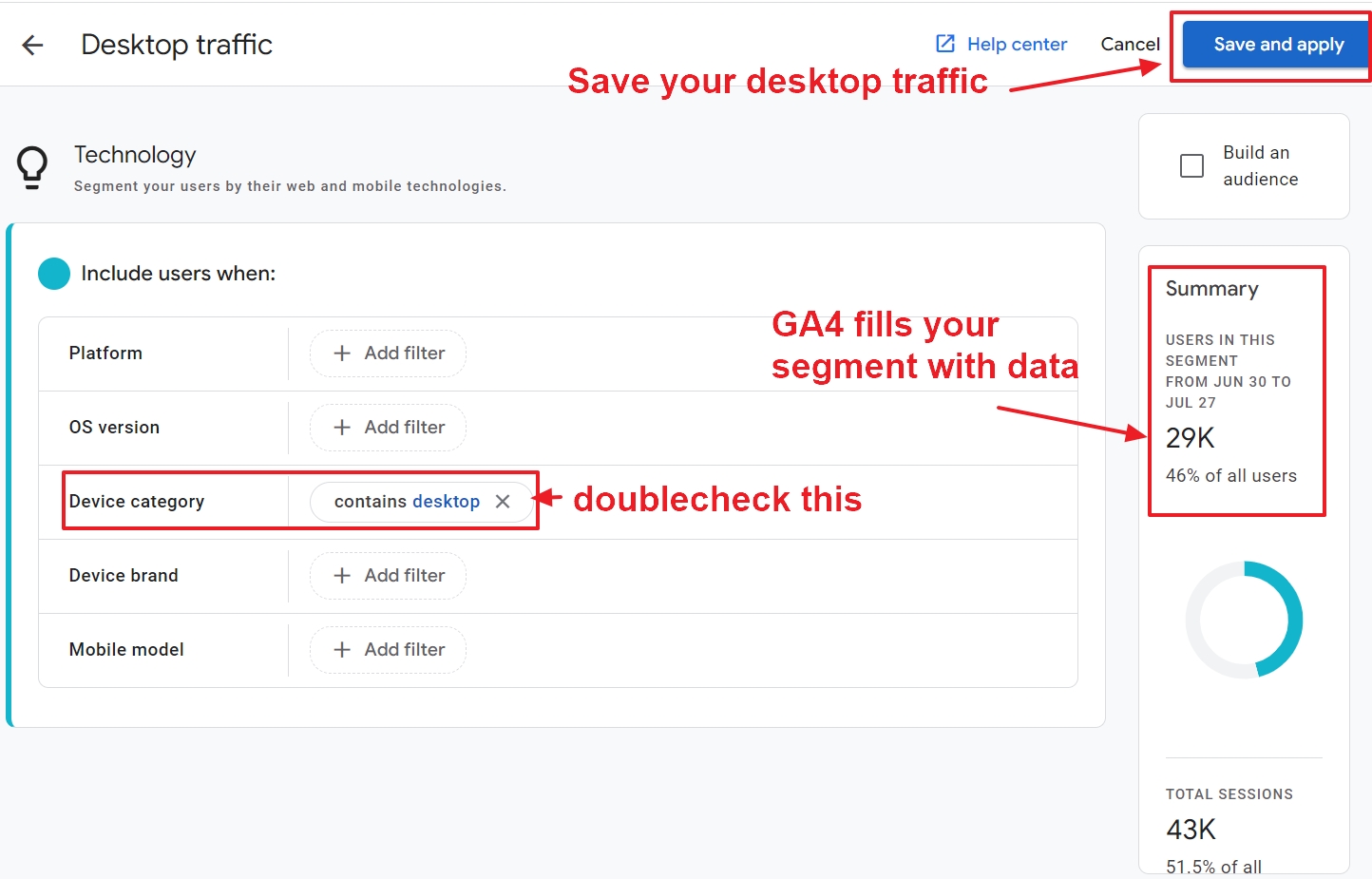
When GA4 has data from users who visited your site on desktop, the segment will show this while you are creating the segment.
And that’s it. Your basic cross-device overlap report is ready.
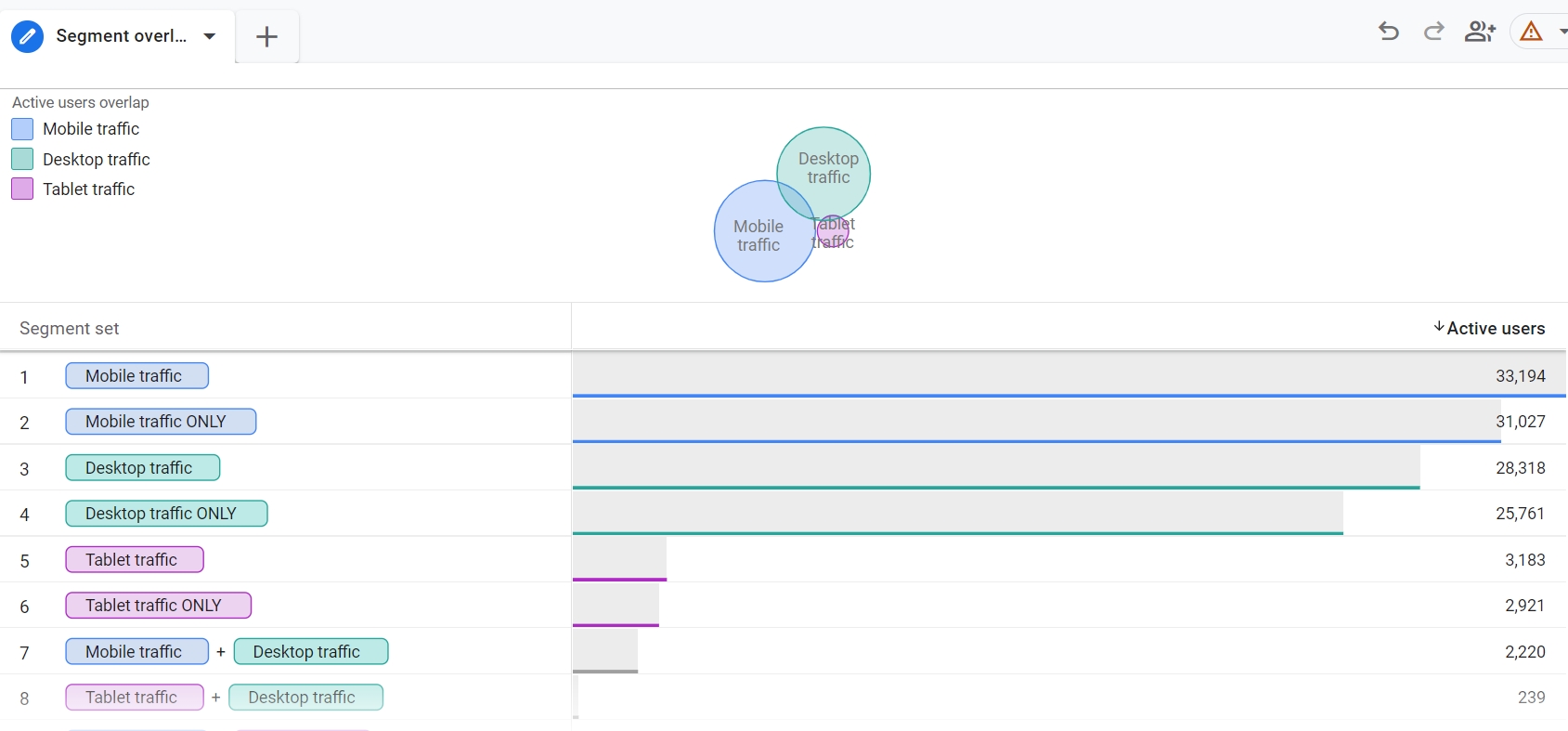
The device overlap report features a Venn diagram that displays the portions of user devices that visited your site by device category.
The raw user numbers in this report are likely to be very similar to your standard devices report. But the diagram provides a useful illustration of how many users visited your site on multiple devices. For the report I created above, this can be mobile, tablet and desktop only. Or any combination of the 3 different device categories.
This report seems to require a good chunk of data to function. I’ve noticed that when I shorten the look-back period on this report to under 28 days, I lose any overlap data. So you may need to wait 30 days from the time you enable Google Signals to see any actual cross-device information in your custom GA4 report.
This report is basic, but once you have created it, you can dive deep into cross-device data that is important to understand the user journey on your site.
GA4 conversions and cross-device report
An interesting aspect of the GA4 cross-device exploration is that you can focus on conversion data. Understanding how device overlap contributes to your conversions could be very beneficial.
You need to add conversions to the cross-device report yourself. This is how you do that:
- Click on the + Sign of the Metrics column of the Variables panel
- Import Conversions as metrics to your segment overlap report
- Add Conversions in the Values field of the Tab settings panel.
- Your report is ready. Now you can see, for instance, how many conversions took place for users that visited your site with mobile and desktop.
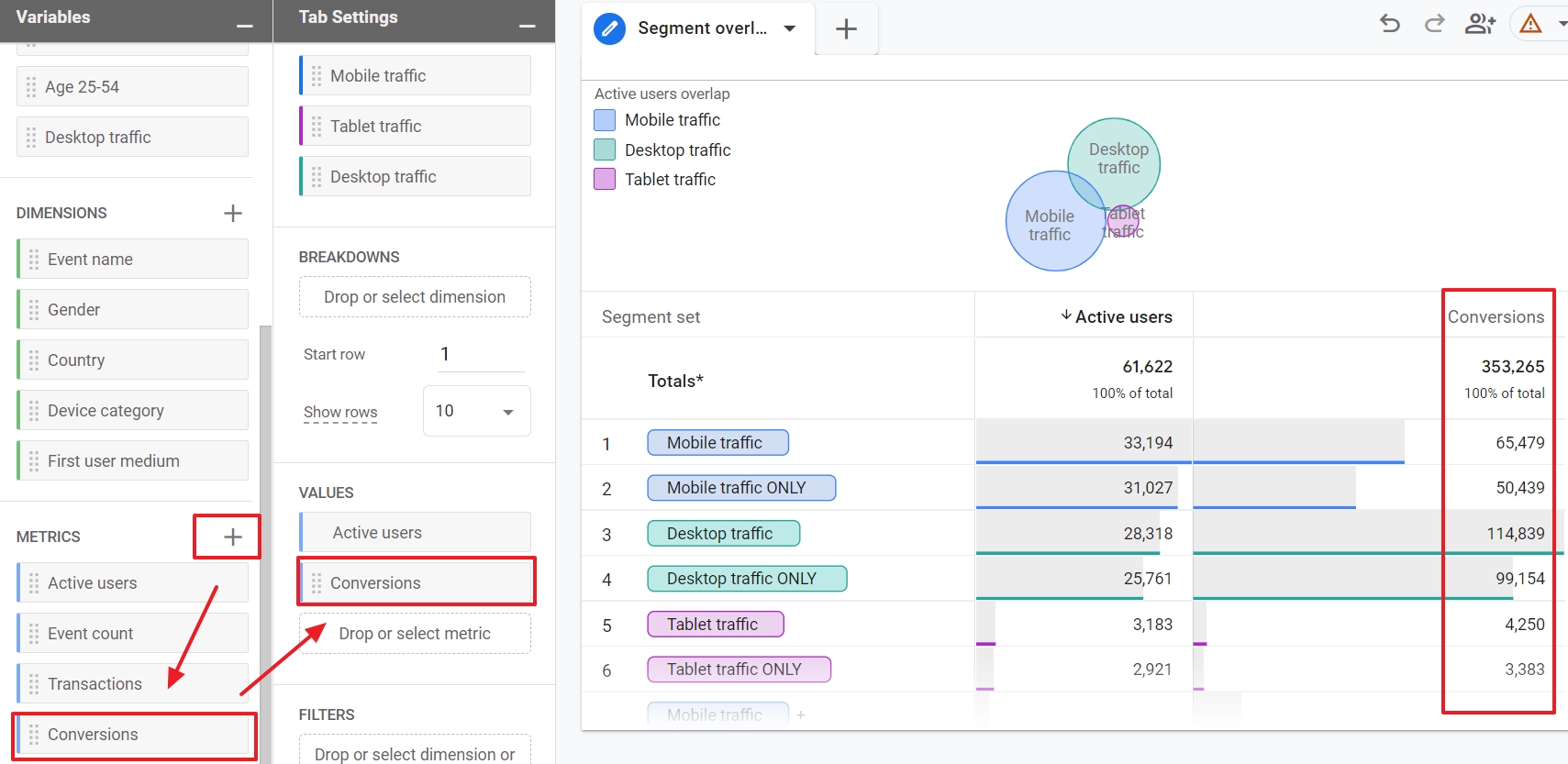
It’s up to you what to actually do with this information. Staring at the data won’t change a thing.
Cross-device and tech analysis report
Within the device overlap report, you can also drill down into the device category, and device category by a user's operating system.
To do that, you first need to add the desired dimensions as Variables. Then you can add them to your report under Breakdown of the Tab settings panel.
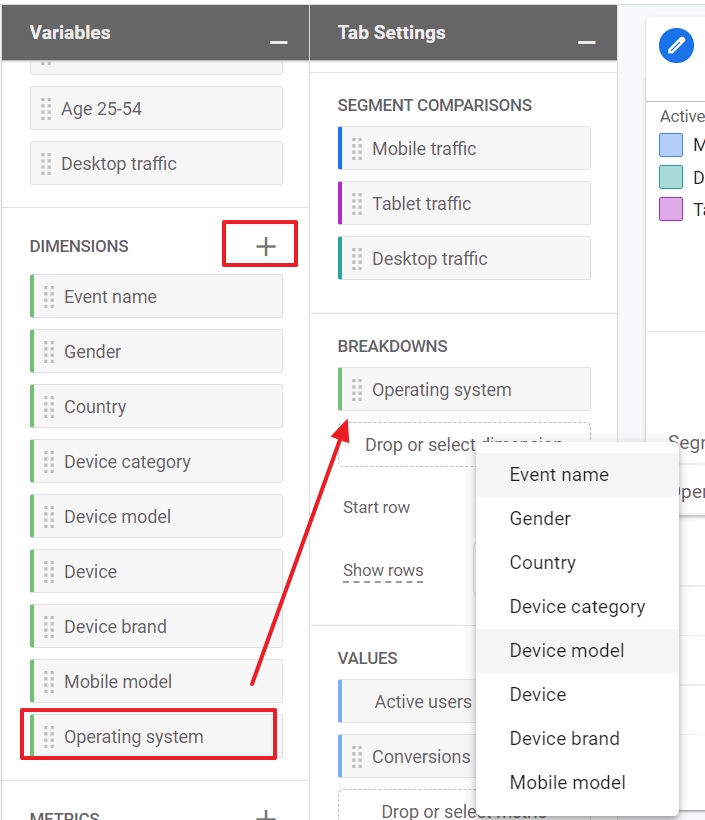
You can even show conversion data. Or you can add other metrics that are important to you.

Channel device Report
You can add the default channel group as dimension and then use it in your breakdown settings.
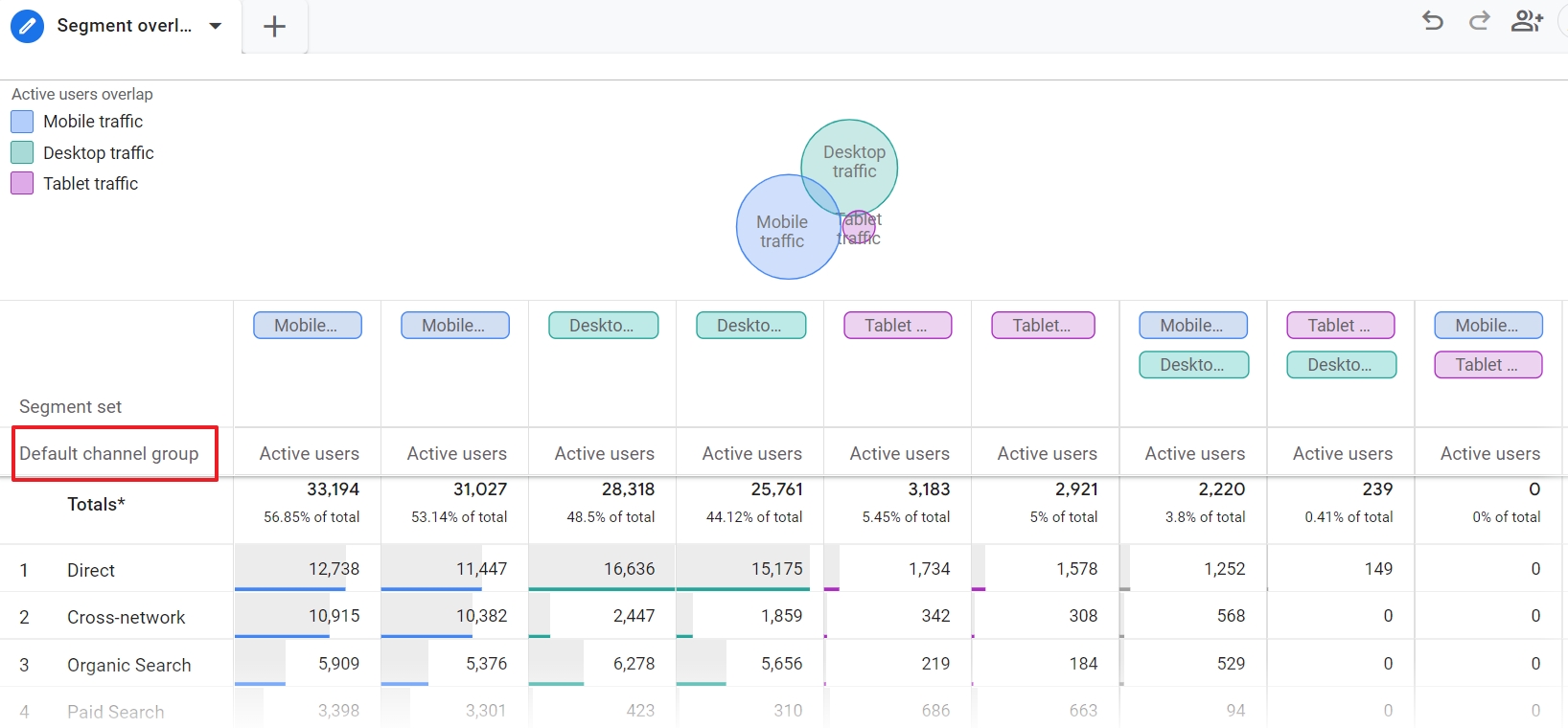
This way, GA4 generates a report that shows cross-device data of your users combined with channels, such as email, direct traffic, organic search, etc.
This is a great way to analyze, for example, how your email readers jump from one device to the other. It also shows on which device they convert.
In the example below, all the conversions took place from users switching from their smartphone to desktop.
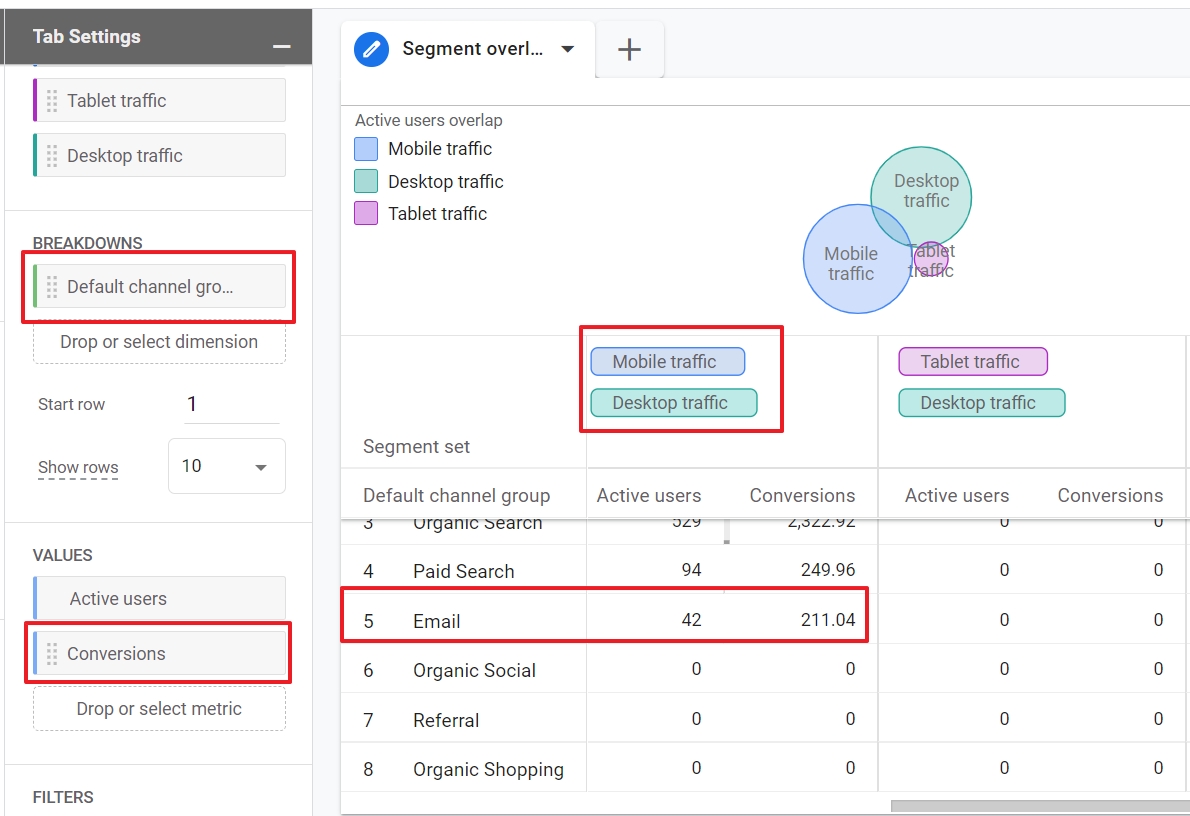
Let me give you one more example of what GA4 combined with Google Signals can reveal.
Cross device acquisition report google analytics
You can select from a huge list of traffic sources to add to your custom device tracking report.
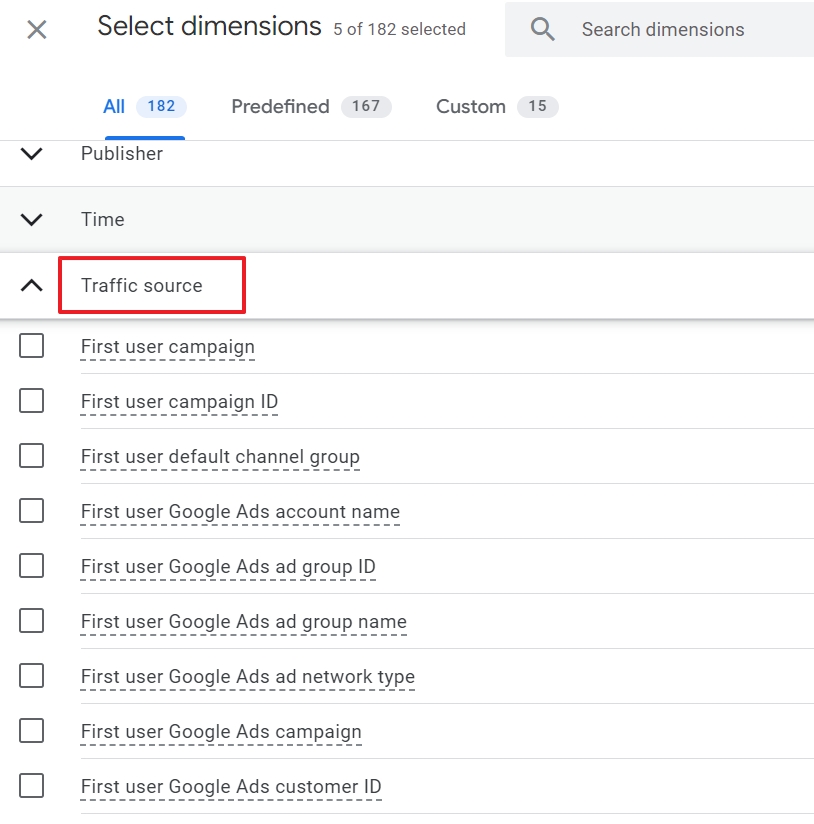
To illustrate how deep your cross-device analysis can go, I added Source and Medium to the overlap report. This is what GA generated in the blink of an eye:
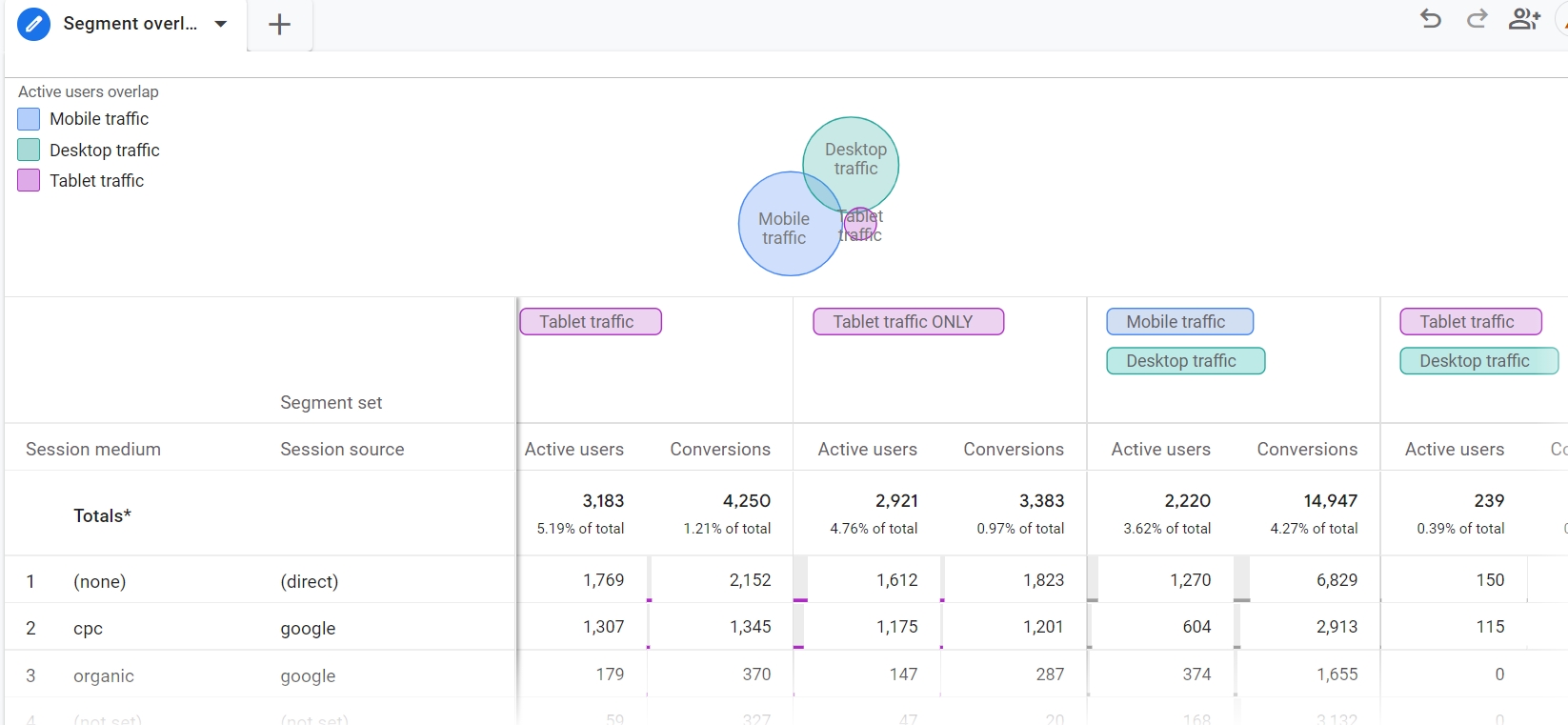
The utility you gain from cross-device reports like the ones above will depend on the amount and type of traffic your website gets. If you have a site that earns a significant amount of mobile or tablet traffic, then the device overlap report can help you learn more about your user experience.
There is a lot more that you can detect in the cross-device report in GA4. I have composed a list of questions and answers for you and hope this helps you better understand the limitations and possibilities in GA4 at this moment.
FAQ cross device tracking GA4
Does Google track users across devices?
Yes, it does. But the user needs to be logged in to a Google account. By default, Ad Personalization is turned on in everyone’s Google account settings. So just about every user that’s logged into their Google account can be tracked using Google Signals.
But then again, users can also revoke permissions to be tracked by changing this in their Google account. These are, however, not the only options to prevent being tracked across devices. Think, for example, of ad and script blockers, VPNs, virus software, etc.
You need to take this into account when you analyze cross-device data in Google Analytics. There will be a lot more users who interact with your site on different devices than GA shows.
I said it before: you don’t need 100% of the data to make smart data-driven decisions.
Is GA4 cross-device tracking retroactive?
No. The data is collected with Google Signals and that is not a retroactive feature. So your reports will be empty until your account accumulates enough data to start matching your website visitors with their devices.
Which device categories are there in GA4?
There are 4 different device categories in Google Analytics 4: desktop, mobile, tablet and smart TV. These categories are available as dimensions in your reports and explorations.
The tech reports display this data automatically.
In the Tech overview report, a circle diagram shows you the percentage of the different device categories of your users.
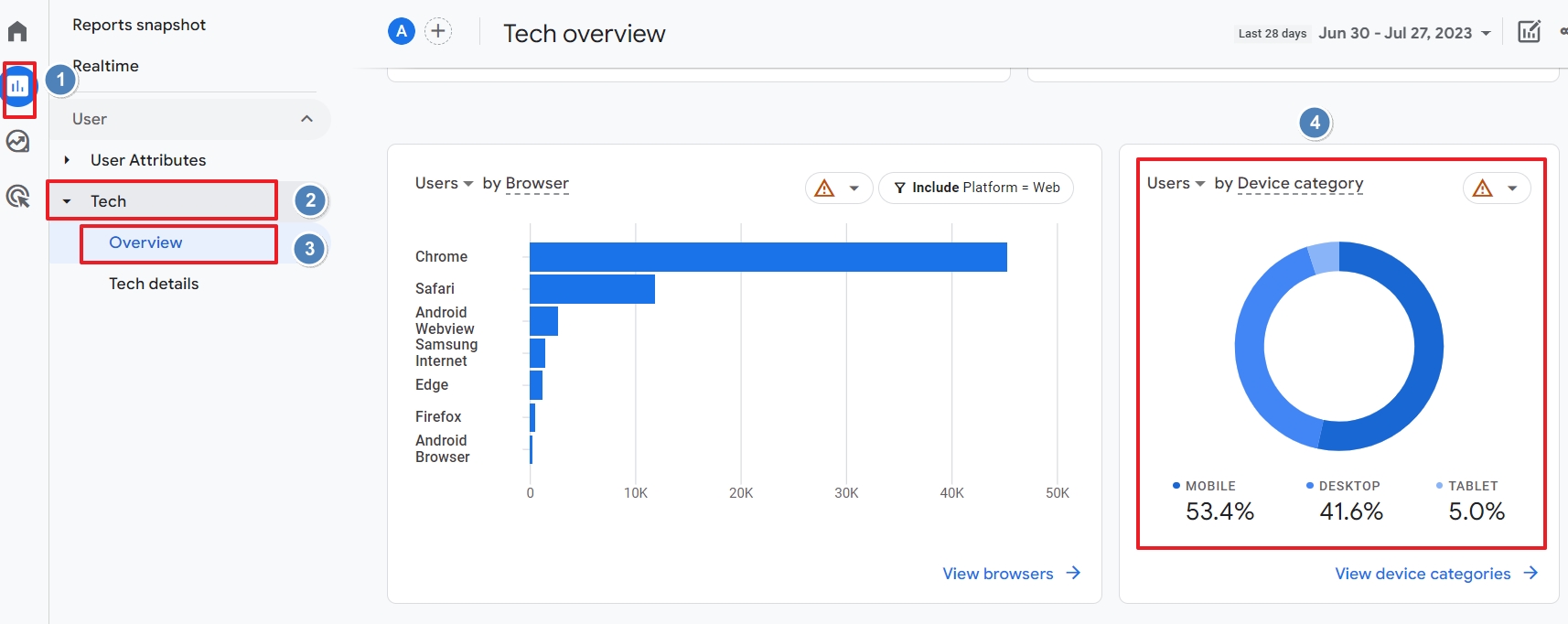
More detailed information about the used device categories is waiting for you in the Tech details report.
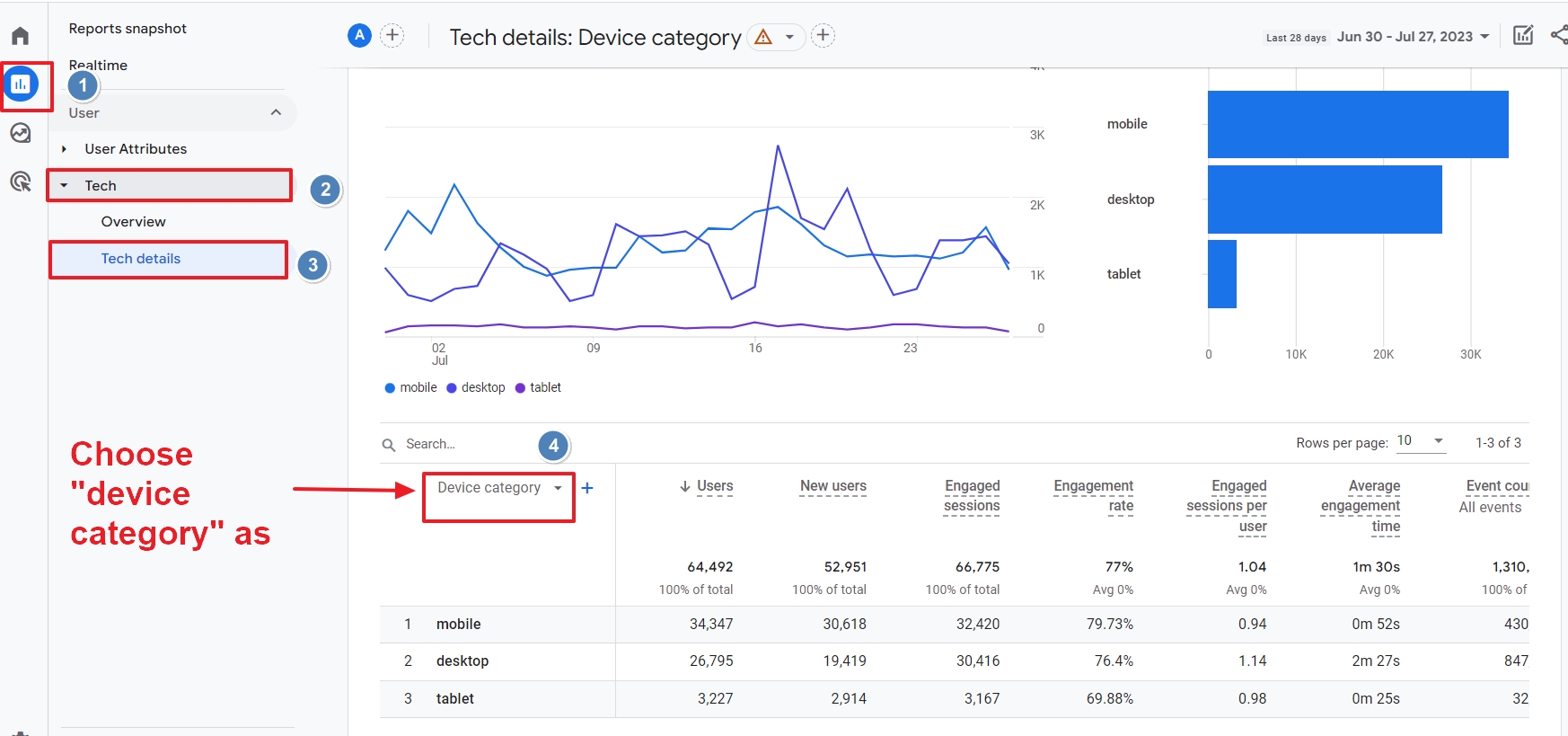
Where does Google Analytics’ cross-device data come from?
Google’s documentation states that the data in your cross-device reports originate from the segment of your users that
- Are signed into their Google account in their browser
- And have Ads Personalization turned on in their settings.
The data can also be based on:
- End user location
- Search history
- YouTube history
- Google partner sites
Google’s fully integrated domination of the search ecosystem puts them in a better position than anyone to identify who we are on any device we use. This means that Google’s cross-device tracking technology is more accurate than any custom solution the rest of us can put in place.
Yes. If you want to collect Google Signals data in Google Analytics, you have to give permission to Google to share anonymous data from your account with other Google products.
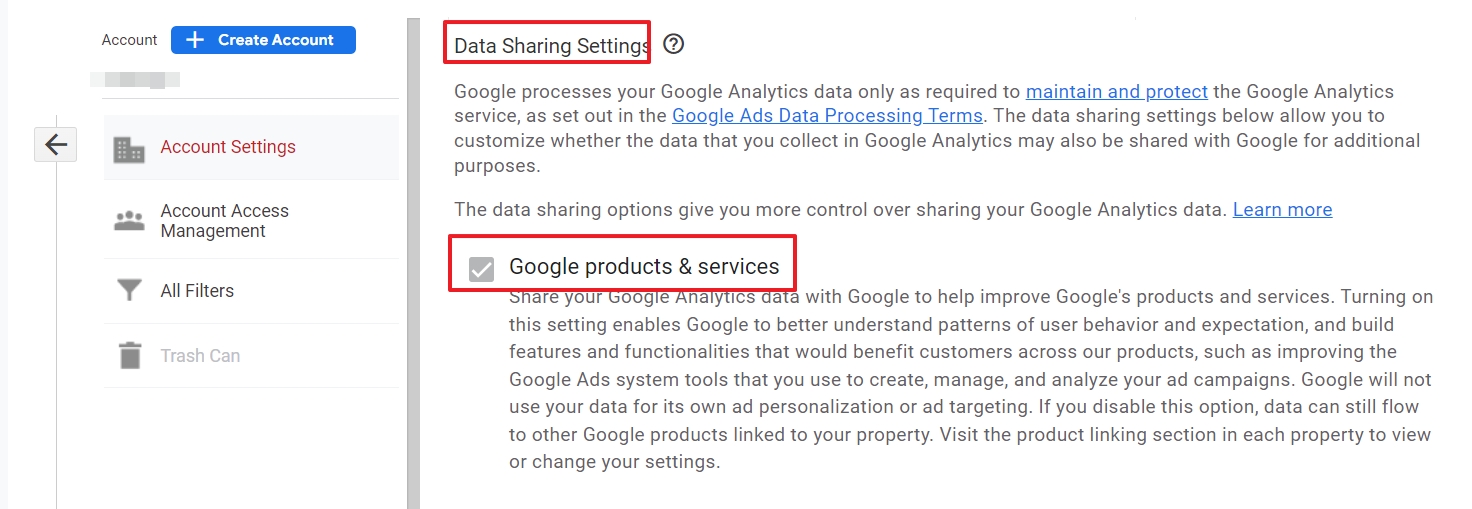
In return, you will benefit from additional features that can enrich your reports with data that a standard GA account doesn’t collect.
Who can check if Google Signals is activated in GA4?
Anyone who has access to a Google Analytics account can check if Google Signals is activated or not. To do this, go to the Admin interface, click on Data Collection of Data Settings. If the checkbox of Google Signals Data Collection is ticked, Google Signals is activated.
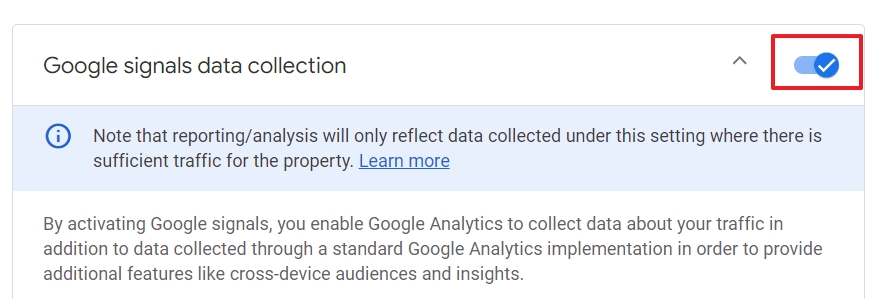
Only users with administrator or editor permissions can switch Google Signals off. But, as a marketer, analyst or someone who is managing Google Ad campaigns for customers, you definitely need to check this setting.
The amount of additional data that is collected or not with Google Signals can highly influence the conclusions you draw from the reports.
What’s next?
As I have shown you, it’s super easy to activate cross-device tracking in GA4 with Google Signals.
You will get data about how your users interact with your site on different devices. Google Signals also unlocks other data that can help you better understand user behavior and your target audience.
Creating a basic custom report with cross-device data is not that complicated. Once you understand GA4 explorations, creating reports like this feels like a game.
A game many people don’t even try to join. And this is a big opportunity for you, as a marketer, analyst or agency. Grab it with both hands. If you want to boost your GA4 knowledge, have a look at our data driven programs. In all cases, I hope to see you soon on tablet, smartphone, desktop or any possible combination.
